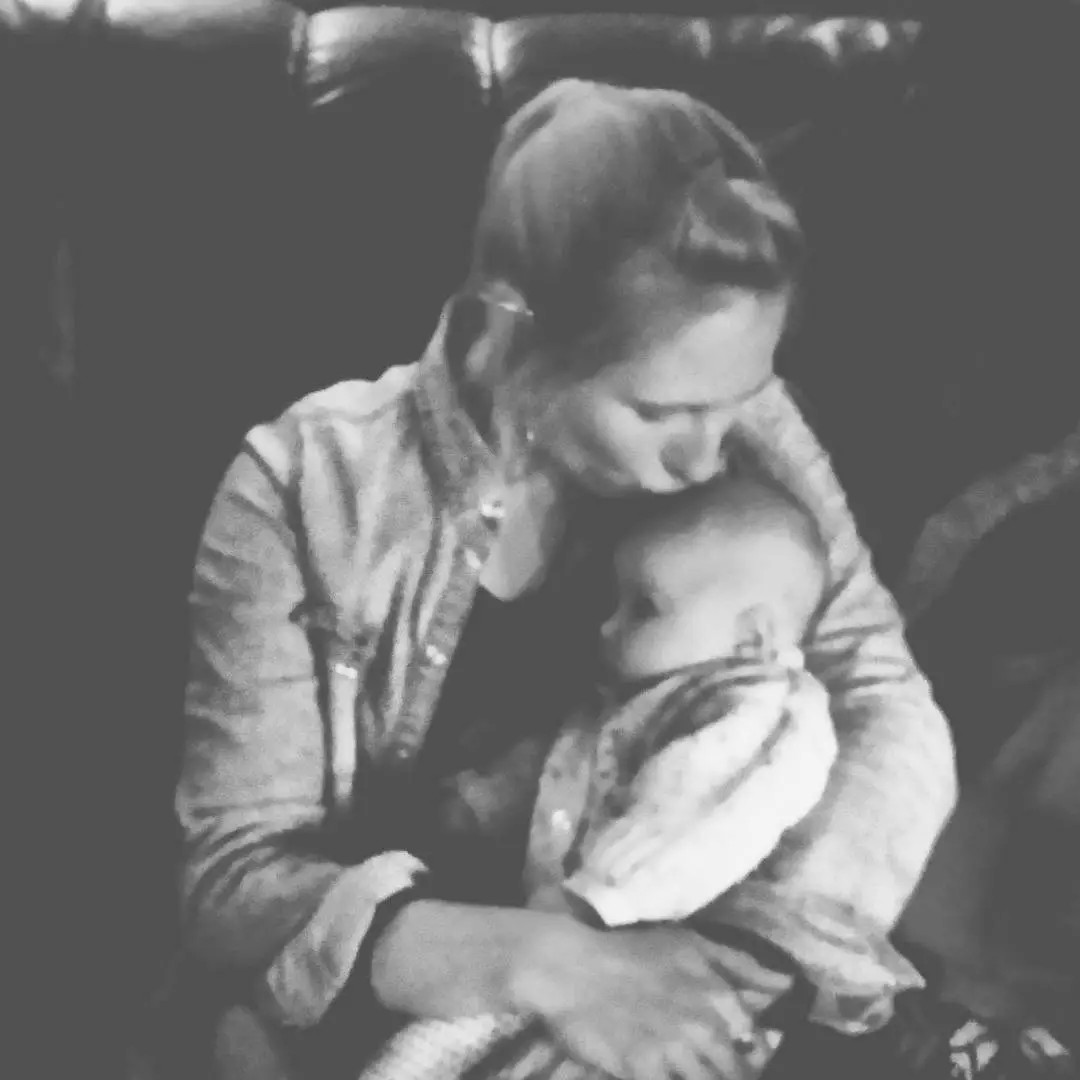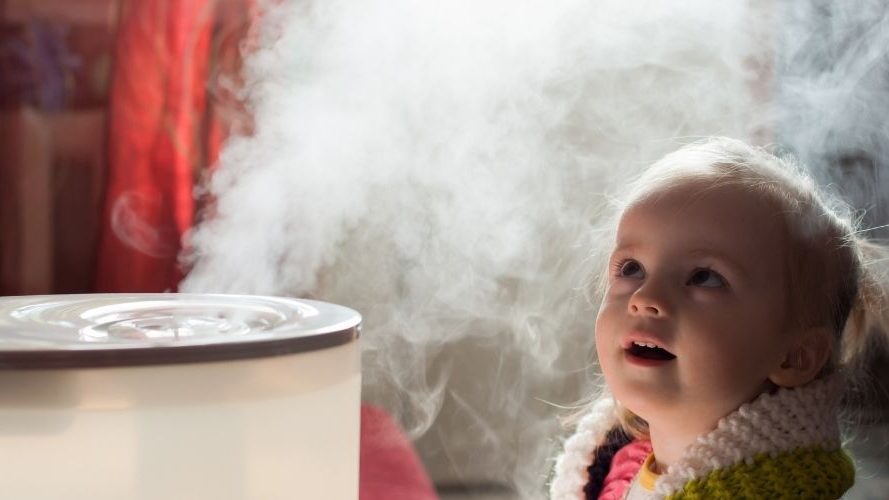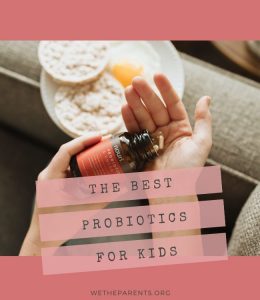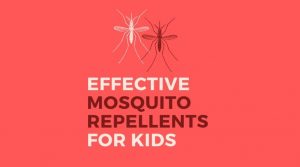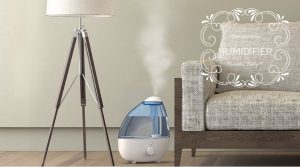Humidifiers, which have become a popular addition to the modern nursery, have plenty of benefits on offer. However, if they’re not used properly, they can wind up causing or worsening respiratory issues and triggering mold growth in the home.
Though these issues sound intimidating, they’re easy to avoid when you know how to use and clean a humidifier properly. We’ve covered what humidifiers do, which ones are safe for your baby, and maintenance do’s and don’ts.
Let’s dive in.
What does a humidifier do?
A humidifier is an appliance that creates moisture in the air by outwardly propelling a fine mist of warm or cool water which disperses throughout a room.
In homes where air is naturally dry, people of any age are prone to suffering from a dry mouth and nose in addition to chapped lips and dry skin. The right humidifier, used properly, can help to soothe all of these symptoms.
Another favored use of humidifiers is the treatment of cold and flu symptoms, as the presence of water vapor in the air can make breathing easier for irritated sinuses and throats, especially when a dry cough is involved.1Humidifiers: Ease skin, breathing symptoms
mayoclinic.org
Some humidifiers allow for the addition of inhalants intended to soothe the nose and throat, but as not all essential oils and inhalant products are safe to use or diffuse around young children, so consult your pediatrician before attempting this.2Are Essential Oils Safe for Children?
hopkinsallchildrens.org
Humidifiers can be very handy when used properly, but they are not a medical treatment, nor are they a substitution for medical care. It’s essential to follow safety recommendations when using a humidifier, especially in your baby or child’s room (check out Humidifier Safety Essentials for a rundown).
Warm mist and cool mist humidifiers: What’s the difference?
Though humidifiers come in many shapes and sizes, they fall into two basic categories: warm mist and cool mist humidifiers. Knowing the difference between these two is important in choosing a safe appliance for your baby’s nursery.
Warm mist humidifiers
A warm mist humidifier, which is sometimes called a steam vaporizer, uses a heat supply to boil water within the unit. This creates steam, which is then propelled into the air.
Because a warm mist humidifier uses heat, it’s not recommended for safe use in nurseries — in the event of a tragic accident, hot water or the device’s heating unit could burn your child. Instead, the American Academy of Pediatrics recommends the use of cool mist humidifiers for babies, toddlers, and children.3Kuzmin, W. R., & Levine, S. J. (1948). U.S. Patent No. 2,454,657. Washington, DC: U.S. Patent and Trademark Office.
www.chop.eduColds:What you need to know
patiented.solutions.aap.org
This does not mean that warm mist humidifiers and vaporizers are without use; teens and adults in the home can benefit from the fact that these units don’t create as much mineral dust and tend to operate more quietly than their cool mist counterparts. Unfortunately, they’re also less energy-efficient, harder to clean, and more prone to bacterial growth owing to warm conditions.
Cool mist humidifiers
A cool mist humidifier releases a fine mist of cool moisture into the air, but may operate in a few different ways.
- Evaporative humidifiers. creates mist by propelling air through a wick or wet filter
- Ultrasonic humidifiers. creates mist through the use of sound waves
- Impeller humidifiers. creates mist through the use of a rotating disk within the unit
The cooler vapors released by these units pose less potential accident risk for children and pets, and they’re also generally easier to clean. In some cases, when recommended by a doctor, their proper use can be beneficial in the treatment of allergy and asthma.4Humidifiers: Ease skin, breathing symptoms
mayoclinic.org
Though cool mist humidifiers are more energy-efficient than steam vaporizers, they’re also a bit louder during operation. Watching product videos of a humidifier during operation will give you an idea of how the unit would sound in your baby’s nursery.
They’re also associated with a telltale layer of white dust, created by minerals that the unit has filtered out of the water. This is easy to clean up, but will need to be done semi-frequently, depending on how often the humidifier is used; if you choose, you can minimize this issue by using exclusively distilled or demineralized water for your humidifier, which can be purchased at the grocery store.
The pros and cons of humidifiers in the nursery
There are both advantages and disadvantages to using a humidifier in the nursery, but most serious issues can be avoided through proper use. This pros and cons list assumes you are using a cool mist humidifier, which the AAP advises for babies and children in order to avoid burn risk.
The pros
- Adds moisture to the air which can be beneficial in dry homes and for children suffering from colds or the flu
- May offer relief to those suffering from allergies and/or asthma, when recommended by a doctor and maintained properly 5Humidifiers: Ease skin, breathing symptoms Print
mayoclinic.org - Cleaning and maintaining the unit is fairly simple and cost-effective in most cases
- Can cut down on uncomfortable static cling on clothes, blankets, and metal home fixtures
- Only if your pediatrician recommends it, some units can be used to diffuse menthol inhalants or essential oils that can offer relief to cold and flu sufferers — since not all essential oils and inhalant products are baby-safe, always get the go-ahead from their doctor.
The cons
- Some units are noisy during operation, which can be disruptive to a baby that sleeps lightly or one that’s sick or fussy
- A white dust consisting of minerals filtered out of the expelled mist may accumulate on surrounding surfaces; it wipes away easily with a damp cloth, but regular cleaning is needed
- If humidifiers are not properly maintained, they can accumulate mold, mildew, or fungus, which will be propelled into the air during use and can cause dangerous respiratory issues6Humidifiers: Ease skin, breathing symptoms Print
mayoclinic.org - Overuse of humidifiers can create excessively humid conditions where dust mites, mold, and mildew can thrive on walls and furniture within the home, triggering allergies, asthma, and respiratory problems7Dust Mite Allergy
aafa.org
Humidifier safety essentials
As you’ve probably realized, many of the potential hazards of humidifiers can be prevented by proper use. These safety essentials will help your family enjoy the benefits of a humidifier without the downsides.
- Always use a cool mist humidifier for baby. The hot water and heating unit within warm mist humidifiers post a burn risk to babies and children, so cool mist humidifiers are recommended by the AAP.
- Place the unit out of reach of children, no matter what. Even a cool mist humidifier may have an inviting light or buttons a toddler wants to push, so to avoid accidental damage to the unit, keep it out of your child’s reach and never treat it like a toy.
- Keep the humidity at a reasonable level. High humidity conditions inside a home can lead to the accumulation of mold and mildew on walls and furniture and provide an ideal environment for dust mites to thrive. If your unit allows you to set a humidity level by percentage, 40-50% is ideal. However, if you’re not sure about your house’s existing humidity and your humidifier is set by a dial, you may wish to pick up a hygrometer — these pocket-sized tools can be bought at most large home-repair stores for less than $10.8Humidifiers: Ease skin, breathing symptoms Print
mayoclinic.org - Never use inhalants for babies without a doctor’s go-ahead. Though one of the major selling points of some humidifiers is the ability to use essential oils or other inhalants intended to provide respiratory relief, these aren’t always suitable for babies, and can sometimes be dangerous. Never use a diffused inhalant or essential oil without clearance from your baby’s pediatrician.
- Clean the unit thoroughly on a regular schedule. Your humidifier’s manual should include instructions on how to clean the unit and how frequently cleaning should take place. If you’ve lost the booklet or have a hand-me-down, this clever YouTube tutorial will show you how to naturally clean your cool mist humidifier with a simple vinegar solution.
Our takeaways
The use of a cool mist humidifier can be helpful in relieving respiratory irritation and coughs related to dry air in the home, and can also help to soothe an irritated throat and nasal passages when babies are battling a cold or flu.
You’ll get the most out of your humidifier and avoid any significant risk by cleaning and maintaining the unit according to its instruction manual and following other basic safety tips.
These include placing the unit out of reach of children, monitoring the balance of your home’s humidity to avoid mold, mildew, and dust mite accumulation, and getting the go-ahead from your baby’s pediatrician before using inhalants in units where doing so is deemed safe.

